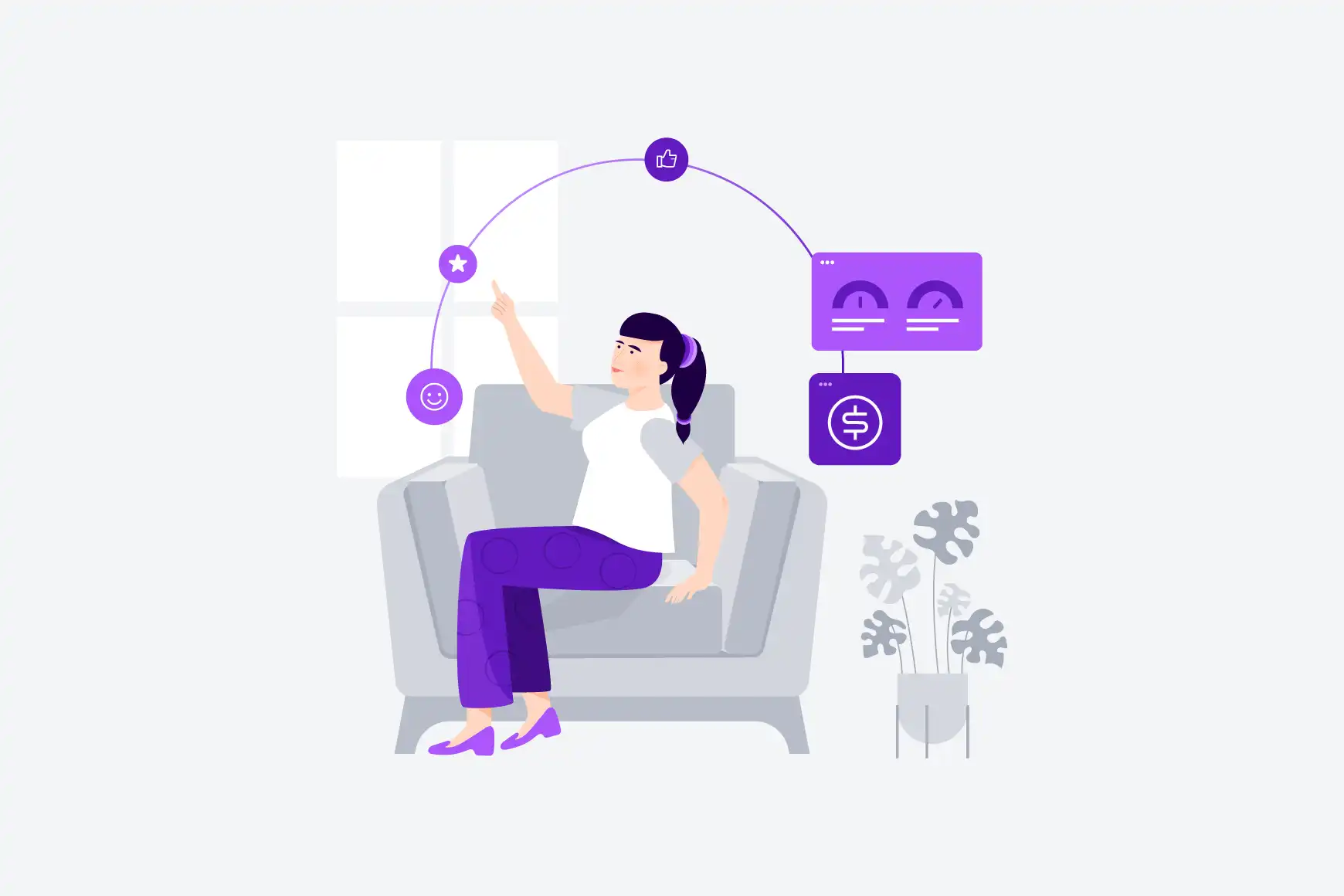7 passi per navigare nel panorama della CX in continua evoluzione

By Taylor Johnson
0 minuti di lettura

La pandemia sta costringendo le aziende a ripensare il loro approccio e a come investono nella CX
I responsabili aziendali si sono rivolti alla tecnologia per migliorare le interazioni con i clienti ormai da anni, ma la pandemia ha messo a dura prova la trasformazione della customer experience (CX) ed è per questo che i leader in costumer experience sono costretti a ripensare il loro approccio e a come investono nella CX.
CX is critical to every business, but before the benefits of a successful CX strategy can be felt, business leaders must be capable of quantifying and measuring CX. Customer satisfaction (CSAT), net promoter score (NPS) and customer effort score (CES) are important KPIs, but because they do not directly translate to cost savings, these metrics often do not resonate with executives outside of their organization.
Sono tre le aree principali da misurare per dimostrare come la CX porta ai risultati di business:
- Generazione di profitti
- Riduzione dei costi
- Risparmio sui costi
The third area—cost savings—is where the ebook How to Prioritize CX in a Cost-Cutting Environment places its focus. CX leaders must be able to draw a clear line between CX initiatives and cost savings in order to succeed in a cost-cutting environment.
Creazione di un business case per CX
Per navigare con successo nel mutevole panorama della CX, ci sono diversi passi che dovresti compiere per costruire un business case efficace. Questo inizia con lo sviluppare una comprensione dei "costi del cliente" e di come utilizzarli per creare un modello semplice che produca vantaggi e ROI in grado di guidare la tua attività:
- 1º Passo: Comprendere le tendenze delle interazioni.
Le interazioni tra clienti e agenti generano una ricchezza di dati che vengono memorizzati nel contact center. Prova ad analizzare e sviluppare una comprensione relativamente a queste tendenze. - 2º passo: Attribuire costi a queste tendenze.
Attribuisci un costo a ciascuno di questi tipi di interazione moltiplicando il numero di chiamate per il costo per chiamata. - 3º passo: Chiedersi il “perché."
Una volta identificate le tendenze o i temi comuni delle chiamate (1º passo), è importante comprendere la causa principale del perché persistono. - 4º Passo: progettare un piano di azione.
Dopo aver identificato le cause alla radice dei problemi comuni dei clienti, crea un piano di azione per affrontarli. - 5º Passo: formulare ipotesi ragionevoli.
Dopo aver sviluppato una panoramica dei problemi comuni dei clienti e aver identificato la causa principale di ciascuno di questi problemi, formula un'ipotesi ragionevole su quanti di questi problemi possono essere risolti (riducendo così la quantità totale di chiamate in arrivo). - 6º passo: definire delle proiezioni.
È giunto il momento di calcolare il potenziale vantaggio derivante dalla risoluzione dei problemi comuni dei clienti riducendo la frequenza delle chiamate in arrivo ad essi correlate. - 7º: misurare l'impatto.
Infine, misura l'impatto dopo aver messo in atto questo piano.
Se raddoppiare i benefici della CX e legarli a un ROI quantificabile sono i primi passi nella costruzione di un business case convincente e affidabile per un investimento continuo nella CX, tuttavia possono guidare solo fino a un certo punto un'azienda se non sono supportati in loco dalla giusta tecnologia.
If you want to learn more about each of these steps and how to build a quantifiable business case for CX—as well as how to identify and adopt the right technologies to execute on it—download the How to prioritize CX in a cost-cutting environment ebook.








